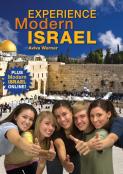- Home
- Play & Learn Home
- Online Enrichment
- Experience Modern Israel
- Israel It's Complicated
- Jewish and Me
- Jewish Holidays Jewish Values
- Jewish Values in Genesis and Jewish Values in Exodus
- Min Ha’aretz
- Our Place in the Universe
- Simply Seder
- The Prophets: Speaking Out for Justice
- Making T'filah Meaningful
- Make, Create, Celebrate
- Yom Haatzmaut Resources
- Hebrew Apps
- About The OLC
- What is the OLC?
- Introduction
- Get Started
- Resources
- OLC Content
- Parent Materials
- See My OLC Classes
- Store
Grabbing—and Keeping—Students’ Attention
Written by Anonymous, 10 of November, 2011
This is the first of three articles on how we can engage our students and ensure they learn.
“Help kids have a great day every day and build capacity!”
That’s the mantra of Eric Jensen, a super-energetic presenter whose specialty is the brain and learning. Jensen places the responsibility squarely on the teacher. It’s the teacher who must “orchestrate intellectual, emotional, and physical states that enhance learning.” He defines “states” as the hundreds of attitudes, sensations, and emotions that run us every day.
It’s the teacher’s job to foster states that drive learning. And there aren’t many that do. Jensen says that only hungry states drive learning. Hungry states include curiosity, skepticism, confusion, anticipation, suspense, and intrigue. He calls these “unfinished states.”
It means that when we encounter unmotivated or bored or disruptive students, we don’t blame the student for being uncooperative, but rather we say, “How do I capture and keep the student’s interest? How do I get this student into a hungry state?”
Here are some ideas:
1. Grab students where they live with a novel introduction to every activity. This serves two purposes:
i) it catches students’ attention and piques their curiosity (gets them into a hungry state) and ii) it helps relate new materials to their existing knowledge, which is key to learning. All Behrman House Teacher’s Guides provide set inductions for every lesson.
For example, if you are teaching the Jacob and Esau story in The Explorer’s Bible 1, you might begin this way:
“First, I need you to promise me something. Okay? You won’t mention any personal names. Now, tell me in just three sentences about a time you saw or experienced favoritism (somebody being treated specially). How did it make you feel? Remember, just three sentences so you may want to write it down.”
After several students have given their (no names) examples, you’d segue into the Jacob and Esau story. Now the students are intrigued by the topic and they will be able to relate the new learning to something they already know—favoritism.
2. Vary activities constantly in a class. Our brains remember best what comes first and next best what comes last. Think of how you feel in a speech or lecture: you’re alert and interested in the beginning, your mind starts to wander halfway, and you’re attentive again when the presenter says, “in conclusion.” Your students are the same.
So keep the class hopping with a variety of different activities.
Here are 5 activities you can do in one Hebrew class. I’ll use Kol Yisrael 3 as an example. When your students learn the Torah Blessings, you might include the following reading/recitation activities in one class:
• Some students listen with headsets to an MP3 of the cantor chanting the Torah Blessings and sing along.
• Others do the digital activities for that lesson on laptops.
• Some read aloud together the prayer projected onto a whiteboard or smartboard.
• Challenged students read to you and a madrich/madrichah.
• Advanced students work in pairs, taking turns reading phrases and correcting each other.
Then mix it up or move on to the next activity, which might be completing an exercise in their book, practicing being called up to the bimah for an aliyah, or having a discussion about what torat emet (“Torah of truth”) means to them.
3. Let students move. It doesn’t matter how, where, or why. Just get them out of their seats. Certain chemicals in the brain are boosted by physical activity. Movement helps prevent boredom, increases attentiveness and participation, and bumps up blood flow.
For example, if your students are using Experience Modern Israel and its companion Google Earth app, you might say the following to the class:
“Everybody stand up. Now touch the back of five chairs, then stop and wait for instructions. [students move] Okay, now face the person you are closest to. That’s your partner for the next five minutes. In that time, I want you to each choose one photo on pages 28–29 in the chapter “A Diverse Nation” and explain why you think it’s the most important image on the page (images show an Israeli salad, a sabra plant, three soldiers, a Druze woman and child, an Orthodox Jewish boy, a section of Tzfat, etc.).”
You get it, right? Touching the backs of the chairs is just a ploy to get students moving. You could have them jump up and down three times, touch their toes, or walk twice around the room.
There’s also no need to confine students to their own seats. For example, you might say, “Please read the last paragraph on page 29 and be prepared to answer questions. Feel free to sit anywhere you want in the room—on the floor, lying on two chairs, or in another seat. Just don’t intrude on anyone else’s space.”
With a flexible attitude and plenty of preparation, you will create a classroom environment that is active, filled with variety, and utterly relevant to your students’ lives. You just have to be willing to take the plunge.
Watch this space for articles on Differentiation and Giving Feedback.
Terry S. Kaye is Director of Behrman House Consulting Group. She can be reached at terry@behrmanhouse.com



